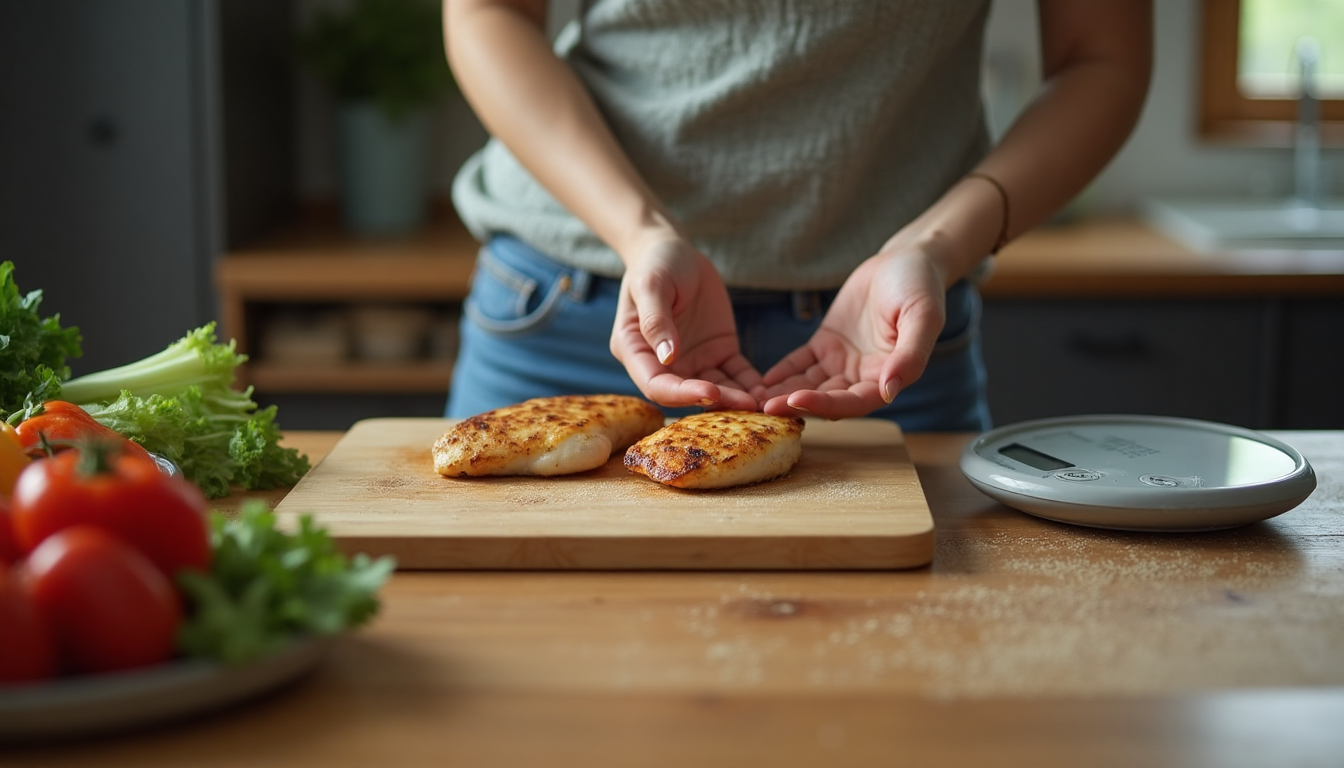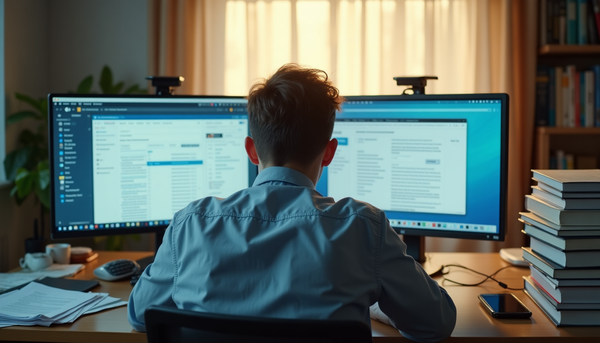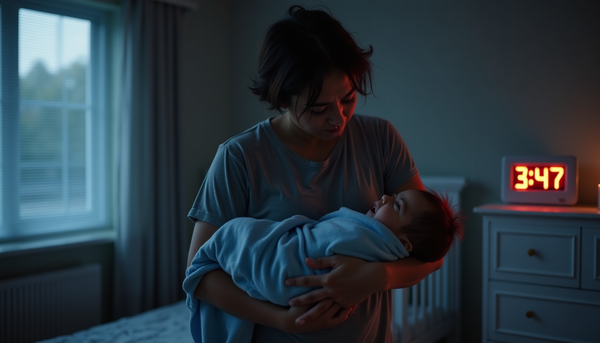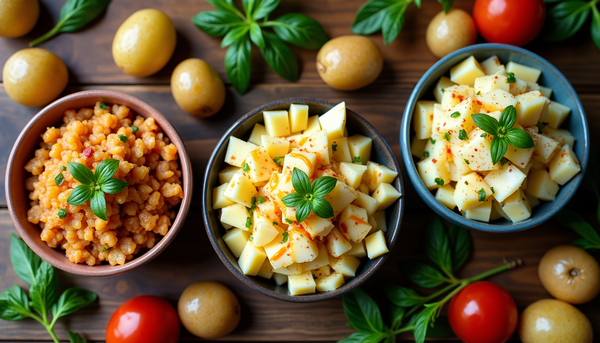Your Hand Knows Better Than Your Scale

Your Hand Knows Better Than Your Scale
I used to carry a food scale everywhere.
Restaurants? I'd guess and then spiral about the inaccuracy. Friends' houses? Awkward conversations about weighing my salad. Beach trips? That scale came with me, obviously.
The obsession with precision nearly broke me. Until I discovered something that changed everything: my hands.
Now, before you roll your eyes and think "great, another trendy tracking method"—hear me out. Because what I learned about hand portions isn't what you'd expect.
The Accuracy Trap We All Fall Into
Everyone's talking about how hand portion tracking is "95% as accurate" as weighing and measuring everything. And sure, that's impressive. The math checks out, the studies look good, the examples are convincing.
But here's what nobody's saying: accuracy isn't actually your problem.
Think about it. When was the last time you failed at a diet because you ate 127 grams of chicken instead of 120?
Never, right?
You "failed" because you binged after restricting too hard. Or because tracking every morsel made you hate food. Or because life got messy and you couldn't weigh your lunch, so you just... gave up entirely.
The real magic of hand portions isn't in the numbers. It's in what it teaches you about your body.
Your Hands: The Ultimate Training Wheels
Here's what I wish someone had told me five years ago: hand portions aren't just another tracking method. They're training wheels for reconnecting with your body.
Think about what happens when you use your palm to measure protein:
- You start noticing what "enough" protein actually looks like
- You realize your body has consistent proportions (your hand size matches your frame)
- You begin trusting your own judgment instead of an app
The goal isn't to use hand portions forever. The goal is to internalize what balanced eating feels like so you can eventually eat without measuring anything at all.
But let's be practical here. If you're coming from obsessive tracking (guilty!), jumping straight to "intuitive eating" feels terrifying. Hand portions bridge that gap.
When Hand Portions Actually Work
After using this method myself and watching friends try it, I've noticed some patterns:
It works when you:
- Use it as awareness training, not rigid rules
- Accept that some days you'll eat more, some days less
- Focus on the overall pattern rather than individual meals
- Remember that vegetables and protein should take up most of your "hand space"
It struggles when you:
- Try to make it as precise as a food scale
- Stress about whether your thumb is the "right" size
- Use it to restrict instead of guide
- Forget that hungry days and satisfied days are both normal
I learned this the hard way when I first tried hand portions but still weighed everything "just to check." Completely missed the point.
The Method (Without the Perfectionism)
Okay, practical stuff. Here's how to actually use your hands:
Your palm = protein portion Think: piece of fish, chicken breast, serving of Greek yogurt. For most people, this is about 20-25g protein.
Your fist = vegetables Any non-starchy vegetables count. Yes, even if they're cooked in oil. We're not being precious about this.
Your cupped hand = carbs Rice, potatoes, fruit, oats—whatever carbs make you feel good. About 20-25g carb content.
Your thumb = fats Oils, nuts, avocado, cheese. Roughly 8-10g fat.
Most people feel great with 1-2 of each at main meals. But—and this is crucial—some days you'll want more. Some days you'll want less. Both are fine.
Your hunger cues matter more than perfect portions.
What Your Scale Can't Tell You
Here's something wild: your hand size correlates with your body size. Bigger people have bigger hands and need more food. Smaller people have smaller hands and need less.
Your phone app doesn't know if you slept terribly last night. Your hand portions can adjust when you're hungrier.
Your food scale can't tell if you're stressed and need more comfort. Your body can guide you to exactly what you need.
The hand portion method teaches you to pay attention to these signals instead of overriding them.
Beyond Hand Portions (The Real Goal)
I haven't used any tracking method—including hand portions—in over a year.
Not because I'm "naturally intuitive" (ha!) but because hand portions taught me what balanced eating feels like. Now I can eyeball a plate and know if it needs more protein or vegetables. I can feel when I'm satisfied versus stuffed.
Some of my friends still use loose hand portions as a guide, especially when they're cooking. Others have moved completely beyond any measurement. Both approaches work.
The key is remembering that any tracking method—even this gentle one—is supposed to be temporary training. Not a lifelong crutch.
Your Starting Point (Keep It Simple)
If you're coming from obsessive tracking, try this:
Week 1-2: Use hand portions but still track normally. Notice the correlation.
Week 3-4: Track only hand portions, not exact macros. See how it feels.
Week 5+: Experiment with no tracking at all on weekends or certain meals.
If you've never tracked before? Jump straight to hand portions. You're already ahead of the game.
The goal isn't perfection. It's awareness.
Questions You're Probably Thinking
But what if I gain weight?
Weight fluctuates for dozens of reasons. Give any new approach at least a month before judging results.
What about my specific macro targets?
Unless you're a competitive athlete, you probably don't need to hit exact macro ratios. "Enough protein, plenty of vegetables, some carbs and fats" covers 90% of people's needs.
How do I know if it's working?
You feel satisfied after meals. You're not thinking about food constantly. You have energy for your workouts and daily life. Your weight is stable or moving in the direction you want.
Notice how none of those measurements require a scale or app?
The Permission You've Been Waiting For
Here's your permission: you don't have to track everything perfectly to be healthy.
You don't need to weigh your food to trust yourself around it.
You're allowed to eat more when you're hungrier and less when you're satisfied.
Your hands—attached to your body, made for your proportions—know more about what you need than any algorithm.
Hand portions can teach you this. But only if you let them be a bridge to body awareness, not another way to control and measure every bite.
Your scale will always give you a number. Your hands will teach you to listen.
Which sounds more sustainable to you?
What's your relationship with food tracking been like? Are you ready to trust your body's wisdom over an app's calculations? I'd love to hear your thoughts in the comments.




